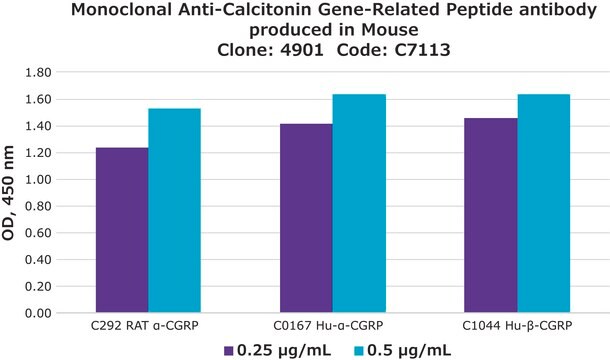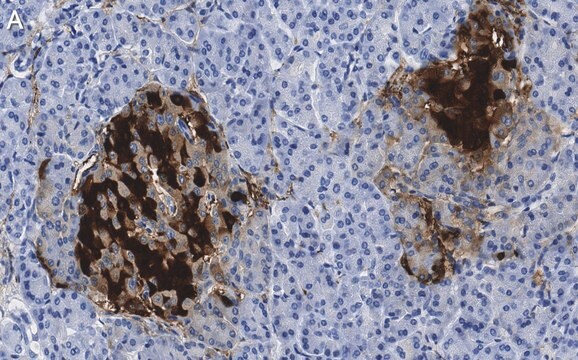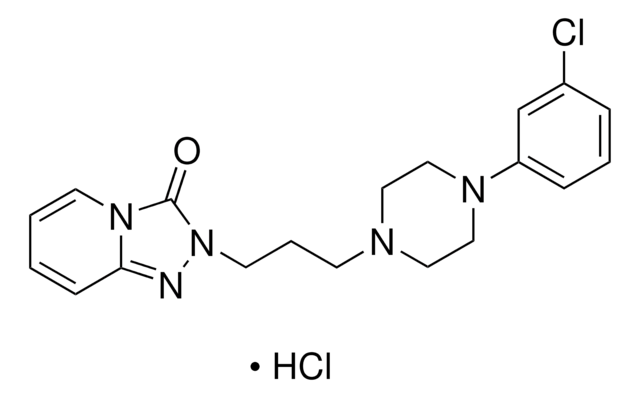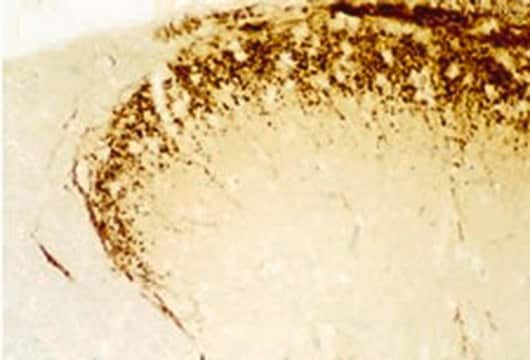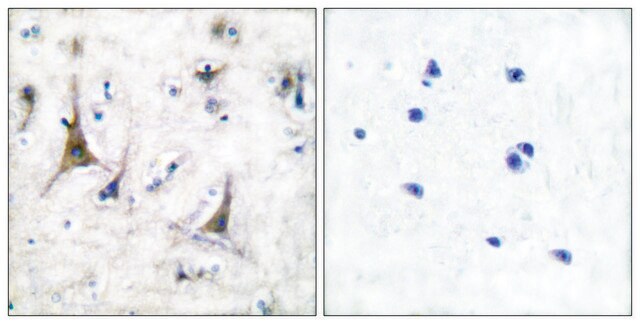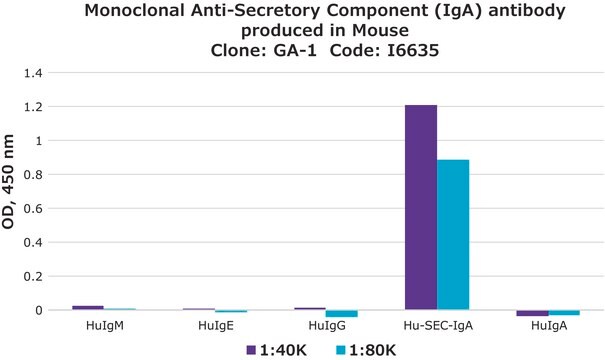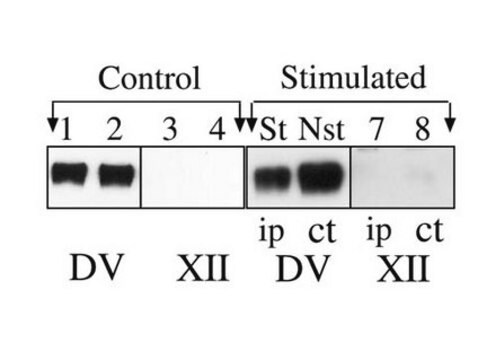NE1013
Anti-PGP9.5 (176-191) Rabbit pAb
liquid, Calbiochem®
Sinonimo/i:
Anti-Neuron Cytoplasmic Protein 9.5, Anti-Ubiquitin Thiolesterase L1, Anti-UCHL1
About This Item
Prodotti consigliati
Origine biologica
rabbit
Livello qualitativo
Forma dell’anticorpo
serum
Tipo di anticorpo
primary antibodies
Clone
polyclonal
Stato
liquid
contiene
≤0.1% sodium azide as preservative
Reattività contro le specie
porcine, human, rat, mouse
Produttore/marchio commerciale
Calbiochem®
Condizioni di stoccaggio
OK to freeze
avoid repeated freeze/thaw cycles
Isotipo
IgG
Condizioni di spedizione
wet ice
Temperatura di conservazione
−20°C
modifica post-traduzionali bersaglio
unmodified
Informazioni sul gene
human ... UCHL1(7345)
Descrizione generale
Immunogeno
Applicazioni
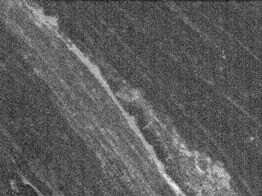
Immunoblotting (1:1000)
Frozen Sections (1:2000, fluorescence)
Attenzione
Stato fisico
Ricostituzione
Risultati analitici
Mouse dorsal root nerve fibers
Altre note
Tezel, E., et al. 2000. Clin. Cancer Res.6, 4764.
Immunofluorescence protocol
Care should be taken so that the incubation solutions do not evaporate. It is recommended that incubations be performed in a humidified chamber to prevent evaporation. Washing steps should be done in large volumes of phosphate buffered saline (PBS).
1. Warm slides to room temperature.
2. Re-hydrate with PBS for 10-15 min.
3. Remove PBS and incubate in blocking buffer (PBS containing 3% normal donkey serum, 1% bovine serum albumin, 0.3% Triton™ X-100 detergent, and 0.01% NaN3, pH 7.45) for 1 h at room temperature.
4. Dilute primary antibody in blocking buffer. Store diluted antibody at 4°C until use.
5. Remove blocking buffer and add diluted primary antibody.
6. Incubate with primary antibody at 4°C for 18-48 h.
7. Remove primary antibody and wash three times for 10 min with PBS.
8. Dilute secondary antibody in blocking buffer to appropriate dilution (follow manufacture′s recommendation). Store at 4°C until use.
9. Incubate slides in diluted secondary antibody solution for one hour at room temperature.
10. Remove secondary antibody and wash three times for 10 min with PBS.
11. Coverslip slides with appropriate mounting media.
Note legali
Non trovi il prodotto giusto?
Prova il nostro Motore di ricerca dei prodotti.
Codice della classe di stoccaggio
10 - Combustible liquids
Classe di pericolosità dell'acqua (WGK)
WGK 1
Certificati d'analisi (COA)
Cerca il Certificati d'analisi (COA) digitando il numero di lotto/batch corrispondente. I numeri di lotto o di batch sono stampati sull'etichetta dei prodotti dopo la parola ‘Lotto’ o ‘Batch’.
Possiedi già questo prodotto?
I documenti relativi ai prodotti acquistati recentemente sono disponibili nell’Archivio dei documenti.
Il team dei nostri ricercatori vanta grande esperienza in tutte le aree della ricerca quali Life Science, scienza dei materiali, sintesi chimica, cromatografia, discipline analitiche, ecc..
Contatta l'Assistenza Tecnica.